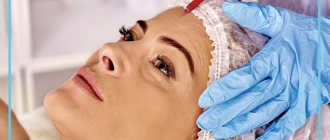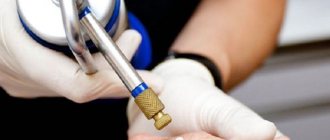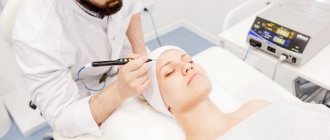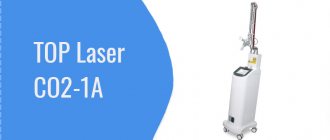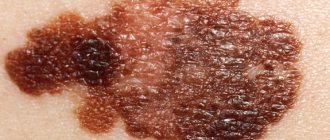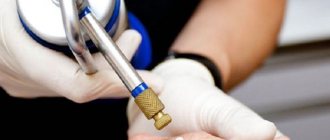Electrophoresis is the administration of various medicinal and cosmetic preparations using electric current. Electrophoresis can be carried out using direct (galvanic) current, as well as using some types of pulsed currents.
Galvanic current in modern cosmetology is used in galvanization, iontophoresis, disincrustation and ionic mesotherapy. The current used for the procedures has traditional, well-established characteristics: constant continuous, voltage 60-80 W, current up to 50 mA (this current is called galvanic). The effect of such current on the body through various electrodes is called galvanization.
About 200 years ago, the Italian physicist A. Volta created a continuous current generator. Luigi Galvani first studied its effect on frogs. Very soon, galvanic current, as an undoubted “high-tech” and the newest word in science of the 19th century, began to be used in medicine. And for about 100 years, galvanic current has faithfully served cosmetologists.
What is electrophoresis
Electrophoresis is a procedure based on the use of low voltage electricity. Under the influence of electric current, various types of medicinal and cosmetic preparations are introduced into the body. The injected substance enters the electric field created in the cells and tissues of the body.
Thanks to this, the best effect from using the product is achieved, as well as deeper penetration due to direct impact on the place where the electrode is used.
A big plus of electrophoresis is that an overdose is almost impossible. It is more likely to introduce an insufficient amount, but more than necessary - no.
Basic Concepts
- Galvanization = therapeutic effect of direct current.
- Iontophoresis = galvanization + medicinal substance.
- Ionic mesotherapy = iontophoresis with stationary electrodes.
- Disincrustation = iontophoresis of saponifiers.
Mechanism of action of the galvanization method
The action of direct current is based on the process of electrolysis. Substances located near the electrodes disintegrate into ions. Ions move under the influence of current. Water molecules break down into H+ and OH- ions. Near the electrodes, ions interact with water, forming electrolysis products: acid and alkali.
Electrolysis products can cause chemical burns at the site where the electrodes are applied: an alkaline burn under the cathode and an acid burn under the anode. This is especially true for stationary electrode placement. To avoid this, the electrode is separated from the skin with a hydrophilic pad. After the procedure, the gasket must be washed or replaced.
A change in ion concentration leads to irritation of skin receptors, resulting in a slight burning and tingling sensation. The passage of current through tissue causes polarization - the accumulation of ions on biological membranes. At a certain concentration of ions, cells enter an excited (electrically active) state. Cellular and tissue metabolism and cell excitability change.
At the same time, the passive transport of large protein molecules and other substances that do not carry a charge (electrodiffusion) and hydrated ions (electro-osmosis) increases. This means acceleration of cellular and intracellular renewal: rapid supply of building materials, nutrients and regulatory substances, as well as timely removal of metabolic products from the cell.
Electrophoresis for the face in cosmetology
Electrophoresis for the face is used both in medicine and in cosmetology. The procedure has a number of advantages and is used as:
- simple facial care to reduce redness, rosacea, rosacea;
- prevention of inflammation - pimples, acne, peeling;
- removal of pigment spots.
The skin becomes firm, soft, elastic and healthy, and its former firmness returns.
Before and after
Features of the event
Many patients know that ion movement occurs with minimal exposure to electrical current. Using current, a medicinal product with active ingredients and cosmetic substances that carry a charge of electric current is injected through problem areas of the body. The procedure allows you to deepen up to 15 millimeters. The elimination period for the active components of the drug is 10-18 hours. There is an extension.
Electrophoresis is characterized by:
- toning effect;
- rapid resorption;
- drying effect.
The effect depends on the active drug.
In cosmetology, electrophoresis involves the activation of two electrodes - a negative and a positive charge. Electrode plates differ in size. Electrode platinum of small dimensions is a strong charge, an active electrode. Synchronized with the problem area, a large plate - on any part of the body.
Before starting, you need to apply the gel. This ensures maximum penetration into the skin.
Benefits of electrophoresis for the face
Many people choose electrophoresis for the face for its objective advantages:
- the treatment is non-invasive, meaning there is no impact on the skin using surgical instruments or needles;
- relieves swelling of the face
- there is no pain, only a slight tingling sensation is felt;
- normal metabolism in facial skin tissues is established;
- substances penetrate deep into the dermis, but the integrity of the skin is not compromised;
- the skin tissue is not deformed.
The effect is visible after each procedure and no recovery process is required.
Terms and concepts used in electrophoresis and galvanization
- To carry out the procedure, two electrodes are always used: positive and negative.
- The negative electrode is called the cathode. Usually all wires and connections from the negative pole are made in black.
- The positive electrode is called the anode. It is marked in red.
- The electrodes used in the procedure can be of different sizes. On a smaller electrode, the current density is higher and its effect is more pronounced. The smaller electrode is called the active electrode.
- An active electrode is applied to the problem area.
- Passive (indifferent) - electrode with a larger area. It is usually held in the patient's hand or attached to the body.
- A passive electrode can also carry a therapeutic load. Bipolar iontophoresis can be performed - negatively charged ions will be absorbed from the negative electrode, and positively charged ones, respectively, from the positive electrode.
- If the electrodes are equal in area, more pronounced sensations occur under the negative electrode.
- The polarity of a substance is the charge of its active particles. Ions of the same name are repelled from the electrode and go deep into the tissue. Therefore, negative ions are introduced from the negative electrode.
Contraindications
However, before signing up for the procedure, be sure to take into account the contraindications. Also make sure that you do not have any allergic reactions to the medicinal components that will be administered to you.
Better yet, make an appointment with a cosmetologist for a consultation.
Facial electrophoresis should not be done if you have:
- there are inflammations, wounds or other damage to the skin of the face;
- hypersensitive skin;
- eczema, dermatitis;
- cardiovascular diseases;
- viral, infectious diseases;
- pneumonia, bronchitis, gastritis;
- eye diseases;
- you are pregnant or breastfeeding.
What diseases are treated with electrophoresis?
Medicinal electrophoresis is used to regulate the processes of the central nervous system, improve autonomic functions, stimulate tissue regeneration, resolve inflammatory infiltrates, reduce pain, and restore motor functions.
In infants, medicinal electrophoresis is prescribed for:
- hip dysplasia
- consequences of birth injuries
- for hypo- and hypertonicity of muscles
- for pain syndromes
- with inflammation of the mucous membranes of the oral cavity
- for neurological problems
How is electrophoresis performed for the face?
To begin with, the cosmetologist cleanses the facial skin and prepares it for the procedure. Then, directly engaged in electrophoresis, he monitors the patient’s condition throughout the entire session.
Well, the step-by-step instructions for electrophoresis for the face are as follows:
- The cosmetologist applies a special gel to the face for better current conductivity.
- Next, the specialist selects suitable plates depending on the problem and the area of skin being treated.
- Both sides of the face are treated with sliding and light movements.
- At the end of the session, the direction of the electrodes is changed and the treatment is repeated.
- Then a nourishing mask with beneficial ingredients is applied to the face.
Important! For 24 hours after the procedure, you cannot use cosmetics, swim, visit baths, solariums, or the gym.
On average, the procedure does not last long - about 7-8 minutes, and it can be done once every two weeks. The whole course of treatment consists of six sessions.
If you want to take a second course, you can do this in two months.
Preparation
Before the session begins, the patient needs to be familiarized with the sensations that may arise during the procedure. In addition to a slight tingling sensation on the face, there may also be a noticeable metallic taste in the mouth. Therefore, the cosmetologist must select a current strength at which you will not feel any discomfort.
The skin in different areas has different sensitivity. Thus, the skin around the nose and eyelids is most sensitive. If the unpleasant sensations develop into painful ones, you need to tell a specialist about this, who will reduce the current strength.
The cosmetic substance is delivered to the tissue area through the sebaceous and sweat glands. A small part of the drug may enter organs located near the site where electrophoresis is performed. But a large concentration of the substance remains on the problem area of the skin.
+
How to choose a cosmetologist
The specialist must be qualified and have experience in cosmetology. He must also have a good understanding of the functionality of medical equipment and before the procedure make sure that the client has no contraindications.
In case of unforeseen circumstances, such as severe irritation on the skin or deterioration in the patient’s well-being during the procedure, the cosmetologist may interrupt the session and the course as a whole.
Almost all patients, regardless of age, gender and severity of the disease, tolerate the facial electrophoresis procedure well. In order for the treatment to be effective and give the necessary results, you need to complete the entire course and follow all the recommendations of your cosmetologist.
This procedure does not require any recovery period. There are also virtually no adverse reactions or complications after cosmetic electrophoresis of the face, since the electrodes operate at low power and low voltage.
Only slight redness of the facial skin may be observed.
The effect of electrophoresis lasts for a long time due to the action of drugs that continue to work long after the procedure.
Definition and Action
During the procedure on the facial skin, the use of electrophoresis effectively enhances the effect of the active components of various masks, freshly squeezed vegetables, fruits, and natural collagen. Additionally applicable:
- aminocaproic acid;
- lidase;
- complex of vitamins C, B, others;
- healing mud extracted using technology;
- all kinds of placenta extracts.
The effect of each active drug during cosmetic electrophoresis is aimed at the procedure:
- effective pull-up;
- hydration;
- reducing the level of development of the inflammatory process.
The result is noticeable after 3 days.
Electrophoresis in cosmetology techniques
When is electrophoresis used in children:
Medicinal electrophoresis is widely used in pediatrics, as it allows one to avoid injections that frighten children, and allows one to reduce the concentrations and doses of drugs, reducing their side effects and preventing allergic reactions. The medicinal effect is “targeted”, because the drug is injected into the skin exactly in the affected area. At the same time, a so-called “depot” of the drug is created in the skin, which makes the effect more long-lasting. Electrophoresis is used in all medical fields, from surgery (for example, cleaning infected wounds with electrophoresis with enzymes), to cosmetology, dermatology and dentistry. In children, it is actively used in the treatment of neurological diseases, in the treatment of bone fractures, and in bronchopulmonary diseases.
Are there any side effects?
Electrophoresis has no side effects. The main thing is to contact an experienced, qualified doctor who, when prescribing the procedure, will take into account all contraindications and select the correct drug and method of treatment.
Sometimes after therapy there is a slight increase in temperature, slight burning or swelling in the area of treatment. But all these manifestations go away on their own within an hour and do not require additional medical intervention.
Otherwise, electrophoresis is absolutely safe. An additional argument in its favor can be the fact that this method of physiotherapy is often recommended for children and pregnant women.
For what disorders are these procedures prescribed and how are they carried out?
Electrophoresis according to Ratner (with aminophylline and papaverine):
- Circulatory disorders in the cervical spine
- Injuries and hypoxia during pregnancy and childbirth
- Torticollis
- cerebral palsy
- ZPR
- Specific disorders of speech development (especially effective in combination with speech therapy massage and speech therapy classes)
Electrodes are applied at the back in the cervical-collar area, at the front on the right side of the chest. Exposure time 15-20 minutes. The number of procedures is 10-14.
Electrophoresis with magnesium:
- Increased excitability of the nervous system
- ADHD
- Sleep disturbance
- Astheno-neurotic syndrome
- Tiki
- Stuttering
- Autonomic dysfunction
- Headache
Electrodes are applied at the back in the cervical-collar area. Exposure time 15-20 minutes. The number of procedures is 10-14.
Electrophoresis with an antispasmodic on the lower extremities:
- Cerebral palsy spastic form
- “Tiptoes” (the child often walks, resting only on the front of the foot)
- Flat valgus foot
Electrodes are applied to the calf muscles. Exposure time 15-20 minutes. The number of procedures is 10-12.
Electrophoresis of analgin, sodium salicylate, baralgin
The drugs have not only anti-inflammatory, but also a pronounced analgesic effect.
Indications
- arthrosis;
- spondylosis;
- in case of acute inflammation in the acute stage with severe pain.
Mode of application
The procedure is similar to galvanization: electrodes with a drug solution on a medicinal pad are installed on painful areas.
Peculiarities
A negatively charged electrode with a medicinal pad is placed on the painful area with the highest pain severity. Electrophoresis solution:
- diluted 1/10 50% ampoule solution of analgin;
- 5% sodium salicylate solution;
- 2% baralgin solution.
The amount of solution per napkin is 2-15 ml.
Duration of treatment
Daily procedures are carried out for 10-20 days for 15-30 minutes.
Service information
Iontophoresis is a cosmetic procedure performed to improve the condition of the skin.
Galvanic currents do not have a traumatic effect on tissues - on the contrary, such physical effects normalize the tone of facial muscles, smooth out wrinkles and activate metabolic processes. At the same time, iontophoresis is not limited to the use of current: cosmetologists pre-treat the skin with a special preparation that breaks down into active ions under the influence of electricity. Ions penetrate into the deep parts of the skin and improve the condition of the organ. The procedure can be applied to any part of the body, including the face, décolleté, abdomen and thighs. The biological effects of galvanic current were described at the end of the 19th century. At the beginning of the 20th century, doctors began to use low voltage current as a method of treating various diseases. Later, direct current found its application in diagnostics, treatment of diseases and cosmetology. The particular value of this hardware procedure was associated with improved absorption of medications into the skin under the influence of electricity. A separate method of applying current and alkaline solutions to fabrics is disincrustation.
Bipolar electrophoresis of analgin and novocaine
Indications
The phase of exacerbation of arthrosis and spondylosis with persistent, severe pain and local inflammation.
Method of application and features
Analgin moistened in an ampoule solution (50%) (ratio 1/10, quantity – 2-15 ml) is placed between the electrode (–) and the problem area. A medicinal pad with a 0.5% solution of novocaine hydrochloride (2-10 ml) is placed under the electrode (+)
Treatment duration is from 15 to 30 minutes every day, from 10 to 20 sessions.

